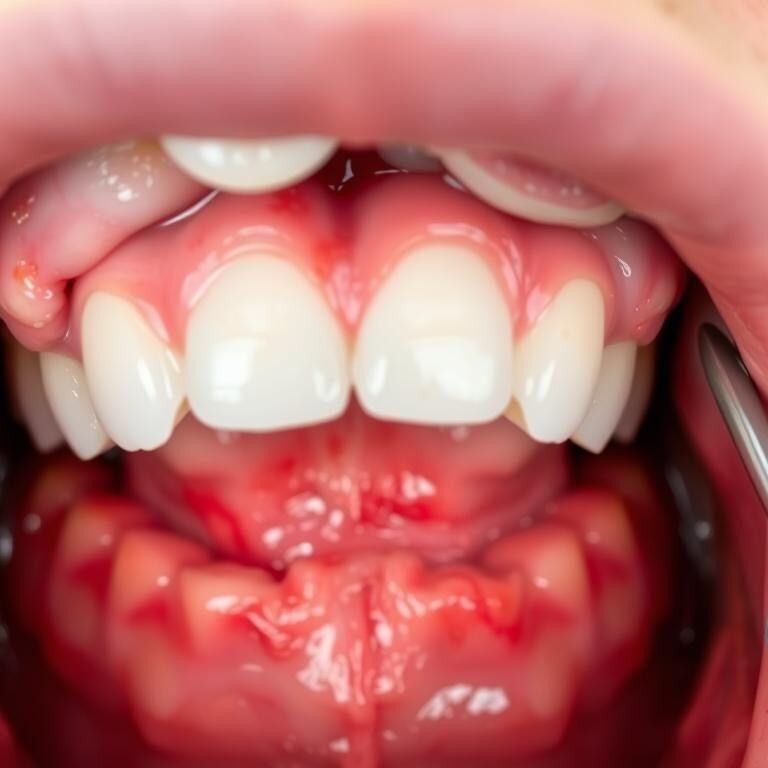Table of Contents
1: Understanding Dental Insurance

Dental insurance is a type of health insurance specifically designed to cover the costs associated with dental care. Just like other types of insurance, dental insurance offers various coverage options and limitations, depending on the specific plan you choose. Understanding how dental insurance works can help you make informed decisions about your oral health and finances.
One of the key aspects of dental insurance is the concept of coverage options and limitations. Most dental plans cover preventive and diagnostic services, such as regular check-ups, cleanings, and x-rays. However, coverage for restorative and major dental procedures, such as fillings, crowns, root canals, and oral surgeries, may vary. It’s important to carefully review the details of your dental insurance plan to understand what services are covered, what percentage of the cost is covered, and if there are any limitations or exclusions.
2: Importance of Dental Insurance

Dental insurance plays a crucial role in maintaining good oral health and overall well-being. By providing coverage for routine check-ups, cleanings, and necessary dental procedures, dental insurance ensures that individuals can receive regular preventive care and address any dental issues before they worsen. This not only helps in preventing tooth decay, gum diseases, and oral infections, but also reduces the risk of more serious health conditions such as heart disease, diabetes, and respiratory infections that have been linked to poor oral health.
Moreover, dental insurance provides financial protection against the high costs of dental treatments. Dental procedures can be expensive, especially for complex treatments such as root canals, orthodontic work, or dental implants. Having dental insurance can significantly lessen the burden of these costs and make necessary treatments more affordable. Without insurance, many individuals may delay or avoid dental care altogether, putting their oral health at risk and potentially leading to more extensive and costly procedures down the line.
2: Factors to Consider When Choosing a Dental Plan

When choosing a dental plan, there are several key factors to consider. First and foremost, you should assess your dental needs. Are you in need of routine check-ups and cleanings, or are you looking for more extensive coverage for procedures such as root canals or orthodontic treatments? Understanding your specific dental needs will help you select a plan that provides the appropriate level of coverage.
Another important factor to consider is your budget. Dental insurance plans vary in cost, and it’s crucial to choose one that fits within your financial means. Consider how much you can comfortably afford to pay for a dental plan each month, as well as any potential out-of-pocket costs such as deductibles or co-pays. Balancing the coverage you need with what you can afford is key in finding the right dental plan for you.
Lastly, it’s vital to thoroughly research dental insurance providers before making a decision. Look into the reputation and customer service of each provider, as well as any limitations or exclusions within their plans. Reading customer reviews and seeking recommendations from trusted sources can offer valuable insights into the quality of coverage and service provided. Taking the time to evaluate these factors will ensure that you choose a dental plan that meets your needs and provides peace of mind for your oral health.
2: Different Types of Dental Plans
Different Types of Dental Plans
When considering dental insurance, it is important to understand the different types of dental plans available. Dental insurance plans can vary greatly in terms of coverage and cost, so it is crucial to choose a plan that aligns with your dental needs and budget.
One common type of dental plan is a preferred provider organization (PPO) plan. With a PPO plan, you have the freedom to choose any dentist you want, but you will typically receive the highest level of coverage when you visit a dentist within the plan’s network. PPO plans generally offer a range of services, including preventive care, basic procedures, and major restorative work. It’s worth noting that while you can see an out-of-network dentist with a PPO plan, you may have higher out-of-pocket costs.
Another type of dental plan is a health maintenance organization (HMO) plan. HMO plans are typically more restrictive than PPO plans, as you are required to select a primary dentist from a designated network. With an HMO plan, you will need a referral from your primary dentist in order to see a specialist. HMO plans often have lower monthly premiums compared to PPO plans, but there may be limitations on the types of services covered or the dentists you can see.
Understanding the different types of dental plans is crucial when choosing the right coverage for your oral health needs. Whether you opt for a PPO plan or an HMO plan, it is essential to carefully review the coverage options, limitations, and costs associated with each plan to ensure it aligns with your dental needs and budget.
Here’s a table summarizing different types of dental plans along with brief descriptions:
| Type of Dental Plan | Description | Credible Source |
|---|---|---|
| Dental Preferred Provider Organization (DPPO) | DPPO plans offer a network of dentists who agree to provide services at negotiated rates. Members can choose any dentist within the network and typically pay lower out-of-pocket costs for in-network services. Out-of-network care is also available but may result in higher costs. | American Dental Association (ADA): Link |
| Dental Health Maintenance Organization (DHMO) | DHMO plans require members to select a primary dentist from a network of providers who coordinate all oral healthcare needs. Services are typically offered at fixed copayment amounts, and preventive care is emphasized. Referrals may be required for specialist visits. | National Association of Dental Plans (NADP): Link |
| Dental Indemnity Plans | Indemnity plans, also known as traditional or fee-for-service plans, allow members to choose any licensed dentist without restrictions. Services are typically reimbursed based on a percentage of the dentist’s fee, and members are responsible for paying upfront costs before reimbursement. | Centers for Medicare & Medicaid Services (CMS): Link |
| Dental Discount Plans | Discount plans provide members with discounted rates for dental services from participating dentists. Unlike insurance plans, there are no deductibles, copayments, or coverage limits. Members pay an annual or monthly fee to access discounted rates on dental care. | Consumer Reports: Link |
2: Coverage Options and Limitations
Coverage options and limitations are important factors to consider when choosing a dental insurance plan. Dental insurance coverage typically includes a range of preventive, diagnostic, and restorative services to help maintain oral health. This may include routine cleanings, X-rays, fillings, and extractions. However, it is essential to understand that different plans may have limitations on coverage for certain procedures or treatments.
One important aspect to consider is the percentage of coverage provided for different services. For example, while preventive services may be covered at 100%, other treatments may only be covered at 50% or less. In addition, some plans may have waiting periods before certain procedures are covered, while others may have annual maximums or limits on the number of visits or services covered in a year. It is crucial to review the plan’s coverage details carefully to ensure it aligns with your dental needs and budget.
Another limitation to consider is the network of dentists and specialists that accept the insurance plan. Dental insurance plans often have a network of preferred providers who have agreed upon discounted fees for covered services. If you have a dentist or specialist you prefer to see, it is important to check if they are in-network with the insurance plan you are considering. Out-of-network providers may result in higher out-of-pocket costs or limited coverage.
Overall, understanding the coverage options and limitations of a dental insurance plan is crucial in making an informed decision. By carefully reviewing the plan details, you can ensure that it meets your oral health needs and is compatible with your budget.
2: Evaluating Your Dental Needs
To ensure that you choose the most appropriate dental insurance plan for your needs, it is essential to evaluate your dental needs comprehensively. Start by considering your current oral health status and any previous dental issues or concerns you may have had. Review your dental records, if available, to gain a better understanding of your dental history.
Evaluate the frequency and type of dental treatments you and your family members typically require. For example, if you or your family members need routine check-ups and cleanings, preventive care coverage might be a priority. On the other hand, if you require extensive dental work or have ongoing oral health problems, you may need a plan that offers more comprehensive coverage, including major dental procedures.
Consider any specific dental needs or preferences that you or your family members may have. For instance, if you have children, you might want to prioritize finding a plan that covers pediatric dentistry services. If you have a specific dental specialist you prefer to see, such as an orthodontist or an oral surgeon, ensure that their services are covered under the plan you are considering.
By thoroughly evaluating your dental needs, you can make an informed decision when selecting a dental insurance plan that best fits your unique requirements.
2: Determining Your Budget
When determining your budget for dental insurance, it’s important to strike a balance between the coverage you need and what you can afford. Start by assessing your dental needs and considering any potential dental issues that may arise in the future. For example, if you have a history of dental problems or anticipate the need for major dental work, you may require a more comprehensive dental plan with higher coverage limits.
Consider the monthly premium cost of the dental plan and how it fits into your overall budget. While it can be tempting to choose the cheapest plan available, it’s essential to weigh the cost against the coverage provided. Keep in mind that dental insurance is an investment in your oral health and can help prevent costly procedures down the line. Additionally, evaluate the out-of-pocket expenses such as deductibles, copays, and annual maximums to ensure they align with your financial capabilities. By carefully evaluating your dental needs and budget, you can choose a dental insurance plan that provides the right balance of coverage and affordability.
2: Researching Dental Insurance Providers
When researching dental insurance providers, it is important to gather as much information as possible to make an informed decision. One effective way to start is by consulting online resources and comparing different providers based on their offerings, network of dentists, and customer feedback. Reliable websites and forums can provide valuable insights into the reputation and customer service of various dental insurance companies.
Another key aspect to consider when researching dental insurance providers is to assess their network of dentists. It is crucial to ensure that the provider has a wide network of qualified and experienced dentists in your area. This will ensure that you have access to quality dental care without having to travel long distances. Moreover, it is also worthwhile to check if your preferred dentist is included in the provider’s network, as this can greatly impact your decision.
Remember, conducting thorough research on dental insurance providers will help you find a plan that not only fits your budget but also meets your dental needs. By exploring various options and considering factors such as reputation, network of dentists, and customer feedback, you can make a well-informed decision that gives you the coverage and peace of mind you deserve.
2: Comparing Dental Plan Networks
When comparing dental plan networks, it is important to consider the size and scope of each network. A larger network may offer more choices and options for dental providers, while a smaller network may provide more personalized care and shorter wait times. Additionally, it is important to determine if the dental providers within the network are conveniently located near your home or workplace.
Another factor to consider when comparing dental plan networks is the level of coverage provided. Some networks may offer comprehensive coverage for all dental procedures, while others may have limitations or exclusions for certain treatments or services. It is important to review the plan details and understand what services are covered and at what percentage or dollar amount.
Overall, comparing dental plan networks involves carefully assessing the size and scope of the network, as well as the level of coverage provided. By considering these factors, you can choose a dental plan that meets your specific needs and ensures access to quality dental care.
2: Evaluating the Provider’s Reputation and Customer Service
When evaluating a dental insurance provider, one important aspect to consider is their reputation and level of customer service. The reputation of a provider can give you insight into their reliability, trustworthiness, and overall satisfaction of their policyholders. Look for providers with a solid track record of providing excellent customer service and prompt resolution of any issues that may arise.
One way to evaluate a provider’s reputation is to read reviews and testimonials from current and past policyholders. These can provide valuable insight into the overall experience and satisfaction levels of individuals who have used the provider’s services. Additionally, you can check third-party websites and forums to see if there are any common complaints or recurring issues with the provider. A provider with a strong positive reputation and high customer satisfaction rates is more likely to provide you with a positive experience and peace of mind when it comes to your dental insurance needs.
2: Understanding the Fine Print: Co-pays, Deductibles, and Maximums
Understanding the Fine Print: Co-pays, Deductibles, and Maximums
When it comes to dental insurance, it’s essential to understand the fine print, particularly the terms related to co-pays, deductibles, and maximums. These terms play a significant role in determining the financial aspects of your dental care.
Co-pays refer to the fixed amount you pay out of pocket for specific dental services. It’s important to note that co-pays can vary depending on the type of service rendered. For example, preventive procedures like cleanings may have a lower co-pay compared to more complex treatments like root canals or crowns. Understanding your co-pays can help you budget for your dental expenses effectively.
Deductibles, on the other hand, are the amount you must pay before your insurance coverage begins. This means that if your deductible is $500, you will need to pay this amount out of pocket for dental services before your insurance starts covering any costs. It’s crucial to be aware of your deductible and factor it into your financial planning for dental care.
2: Considering Additional Benefits and Services
Considering additional benefits and services is an essential aspect when selecting a dental insurance plan. While the primary purpose of dental insurance is to provide coverage for preventive care and treatment, some plans also offer additional benefits that can be advantageous for individuals and families.
One common additional benefit is orthodontic coverage. Orthodontic treatment, such as braces or aligners, can be expensive but is often necessary for correcting dental misalignments. Having dental insurance that includes orthodontic coverage can significantly help offset the cost, making it more affordable for patients.
Another valuable benefit to consider is coverage for cosmetic dentistry procedures. These treatments, such as teeth whitening or veneers, are typically not covered by standard dental insurance plans, as they are considered elective procedures. However, some insurance providers offer specific plans or add-ons that include coverage for cosmetic treatments. For individuals seeking to improve the appearance of their smile, having insurance coverage for these procedures can be a considerable advantage.
Furthermore, certain dental insurance plans may offer coverage for specialized services like pediatric dentistry. As children have unique dental needs, it is important to ensure they receive proper oral care from skilled and experienced pediatric dentists. Having dental insurance that covers pediatric services can provide parents with peace of mind, knowing that their child’s dental health is well taken care of.
Considering these additional benefits and services when evaluating dental insurance plans is crucial in ensuring comprehensive coverage for all dental needs. Understanding the specific benefits offered by different plans will help individuals and families make informed decisions when selecting the most suitable dental insurance for their oral health requirements.
2: Assessing the Accessibility and Convenience of Dental Providers
When assessing the accessibility and convenience of dental providers, it is important to consider factors such as location, office hours, and appointment availability. A dental provider that is conveniently located near your home or workplace can save you time and make it easier for you to schedule regular check-ups and appointments. Additionally, flexible office hours, including evenings and weekends, can accommodate your busy schedule and ensure that you receive the necessary dental care without having to take time off from work or school.
Furthermore, evaluating the appointment availability of dental providers is crucial, especially if you have urgent dental needs or require immediate treatment. Some dental offices may have long waiting times for appointments, while others may offer same-day or next-day availability. It is essential to prioritize providers who can accommodate your needs in a timely manner, ensuring that you receive prompt and efficient dental care when necessary. By assessing the accessibility and convenience of dental providers based on these factors, you can ensure that you have a positive and hassle-free experience when seeking dental treatment.
2: Seeking Recommendations and Reviews
When seeking recommendations and reviews for dental insurance providers, it is important to consider multiple sources of information. Start by asking your family, friends, or colleagues if they have any recommendations based on their personal experiences. These firsthand accounts can give you valuable insights into the quality of service and coverage offered by different providers.
In addition to seeking recommendations from people you know, online reviews can also be a useful resource. Visit reputable websites and forums where individuals share their experiences with dental insurance providers. Pay attention to both positive and negative reviews, as they can provide a balanced view of a company’s strengths and weaknesses. However, keep in mind that online reviews can be subjective, so it’s important to weigh them against other factors and gather a comprehensive understanding before making your final decision.
2: Understanding the Enrollment Process
Understanding the enrollment process for dental insurance is essential to ensure that you make the right choices for your oral health needs. The enrollment process typically involves several steps that need to be followed to obtain coverage. Firstly, you will need to research and compare dental insurance providers to find the one that offers the best coverage and benefits for your specific needs. This includes evaluating their reputation, customer service, and the accessibility and convenience of their dental providers. It is also important to consider additional benefits and services that may be included in the dental plan. Once you have selected a provider, you can begin the enrollment process, which usually involves filling out an application form and providing personal information and, in some cases, proof of eligibility. Understanding the enrollment process will enable you to navigate the system more efficiently and ensure that you have the necessary coverage for your dental needs.
Before enrolling in a dental insurance plan, it is essential to thoroughly understand the terms and conditions of the plan. This includes paying attention to co-pays, deductibles, and maximums. Co-pays are fixed amounts that you may be required to pay for certain procedures or office visits. Deductibles are the amount you must pay out of pocket before your dental insurance coverage begins to pay for services. Maximums refer to the limit the insurance will pay for your dental care within a specific time frame. By understanding these details, you can assess how much you may be required to pay for dental services and determine if the plan aligns with your budget and needs. Additionally, it is important to consider any waiting periods or restrictions that may apply to certain dental procedures. Being well-informed about the coverage options and limitations will ensure that you make informed decisions when enrolling in a dental insurance plan.
2: Seeking Professional Advice
When it comes to dental insurance, seeking professional advice can be immensely beneficial. Dentists and dental professionals have extensive knowledge and understanding of dental health, oral health, and pediatric dentistry. They can provide valuable insights and guidance on choosing the right dental plan for you and your family.
A dental professional can assess your specific dental needs and help you determine the coverage options and limitations that would be most suitable for you. They can also assist in evaluating your budget and finding a dental plan that offers the best value for your money. With their expertise, they can explain the fine print, such as co-pays, deductibles, and maximums, ensuring that you have a clear understanding of the terms and conditions of the dental plan.
Moreover, seeking professional advice can help you navigate the complex world of dental insurance providers. Dentists often have firsthand experience with different dental plan networks and can provide recommendations based on their knowledge of the quality of care and customer service offered by various providers. Their expertise and insight can save you time and effort in researching and comparing dental insurance options.
In conclusion, consulting a dental professional when seeking dental insurance is a wise decision. Their expertise can help you make informed choices, ensuring that you select a dental plan that meets your specific needs and budget. By seeking professional advice, you can have peace of mind knowing that you’re making the right decisions for your dental health. Stay tuned for our upcoming article, where we will delve into the enrollment process and provide tips on how to navigate it smoothly.
How can I determine which dental plan is right for me?
To determine which dental plan is right for you, it is important to evaluate your dental needs, consider your budget, research dental insurance providers, compare dental plan networks, assess the provider’s reputation and customer service, understand the fine print, consider additional benefits and services, assess the accessibility and convenience of dental providers, seek recommendations and reviews, and understand the enrollment process. Seeking professional advice can also be helpful in making this decision.
What are some additional benefits and services that dental insurance providers may offer?
In addition to basic dental coverage, dental insurance providers may offer additional benefits and services such as orthodontic coverage, cosmetic dentistry coverage, discounts on dental procedures not covered by insurance, tele-dentistry services, preventive care services, and access to a network of specialists.
How can I assess the accessibility and convenience of dental providers?
To assess the accessibility and convenience of dental providers, you can consider factors such as the proximity of dental offices to your home or workplace, the availability of evening or weekend appointments, the ease of scheduling appointments, the wait times for appointments, the accessibility of emergency dental care, and the availability of online appointment booking or tele-dentistry options.
What should I consider when evaluating a dental insurance provider’s reputation and customer service?
When evaluating a dental insurance provider’s reputation and customer service, you should consider factors such as the provider’s financial stability, the provider’s history of customer satisfaction, the provider’s responsiveness to inquiries and claims, the provider’s accreditation or ratings from industry organizations, and the provider’s ability to offer a wide network of high-quality dental providers.
What should I know about the enrollment process for dental insurance?
When enrolling in dental insurance, it is important to understand the enrollment process. This may include completing an application form, providing personal information and previous dental history, selecting a dental plan and coverage options, paying the required premiums, and understanding any waiting periods or limitations that may apply before coverage becomes effective. It is recommended to thoroughly review the enrollment materials and seek clarification from the insurance provider if needed.












